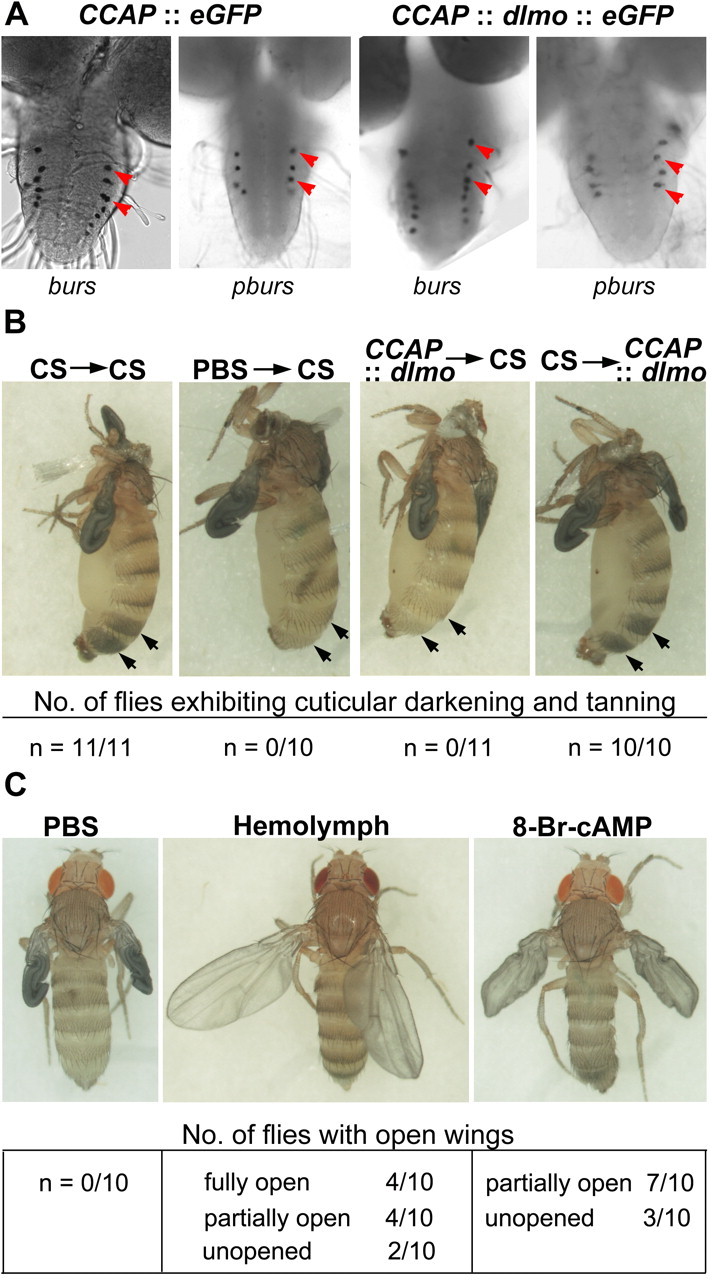Figure 3.

dLmo overexpression interferes with the release, but not the production or the responsiveness to Bursicon in the posteclosion hemolymph. A, The burs and pburs expression appears normal in dLmo-overexpressing third-instar larvae. B, Neck ligation of wild-type flies prevents tanning of the cuticle after eclosion. Injecting posteclosion hemolymph from wild-type flies, but not PBS, into such neck-ligated preparations, rescues this tanning phenotype (arrows). Injection of posteclosion hemolymph from dLmo-overexpressing flies fails to rescue the tanning of neck-ligated wild-type flies, indicating a deficiency of Bursicon in the hemolymph. However, injection of wild-type hemolymph into neck-ligated dLmo-overexpressing flies produces normal tanning, indicating that the response to Bursicon is normal in these flies. C, Intact dLmo-overexpressing flies do not expand their wings when injected with PBS after eclosion. However, wild-type hemolymph is able to rescue the wing expansion defect. This effect is also mimicked by injection of 8-Br-cAMP, implicating both a signal from the head and a Bursicon-cAMP-mediated pathway in regulating posteclosion wing expansion.
